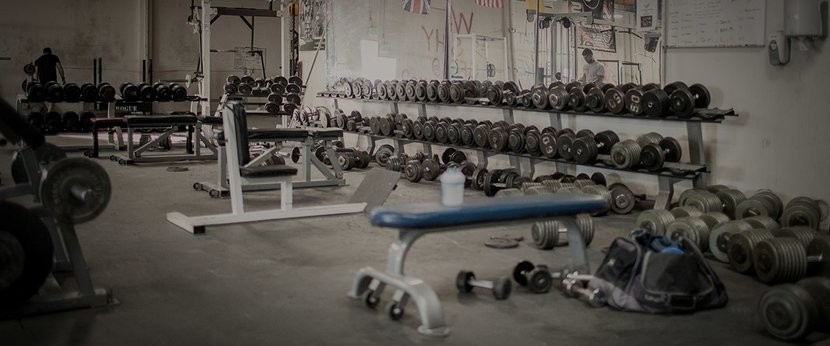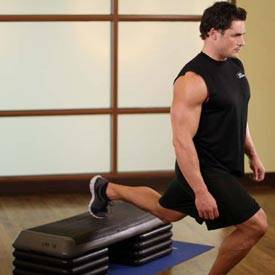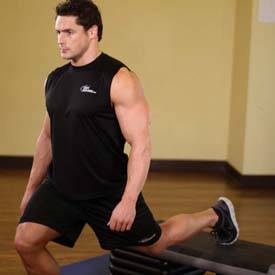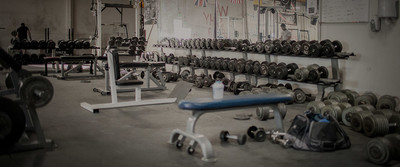Stretch Your Way To A More Muscular Body With This Stretching Routine!

Of all aspects of bodybuilding training, stretching is the one part that is most often ignored by the majority of people. However, when stretching is properly integrated into a weight training program it can actually speed up your muscle growth.
Of all aspects of bodybuilding training, stretching is the one part that is most often ignored by the majority of people. It is just one of those things that seems to get pushed off to the side as not that important. You probably say to yourself in the back of your mind “I know I should stretch… blah, blah, blah… but why bother? I just want to get big and muscular. And besides I don’t want to look like some skinny yoga master.”


Standing Elevation Quad Stretch
Well, one thing you probably didn’t realize is that when stretching is properly integrated into a weight training program it can actually speed up your muscle growth. In this article I’m going to outline several unique stretching exercises that are designed to stretch the connective tissue which surrounds the muscles, and there by expand the fascia and enable the muscles to grow bigger and stronger.
Connective Tissues
The connective tissues that surround the muscles are very tough and hug the muscle fibers tight. This can actually constrict expansion and growth. For muscle hypertrophy to occur the surrounding fascia needs to be stretched and become more pliable in order to give the muscle fibers room enough to expand grow bigger.
Even if you haven’t seriously focused on stretching before, the muscle mass that you have built up to this point came about from the stretching and expanding of the muscles encasing tissue. During your workouts when blood is being pumped into the muscles, the surrounding connective tissues are being stretched, that’s why you get that tight feeling we call “the pump”.
The ideal time to stretch for increasing muscle mass is right after you’ve trained a particular body part and the muscles are “pumped up” and feeling tight. At this stage the connective tissues are already being stretched from the blood volume in the muscles, and then by manually stretching the muscles as well, you get a double whammy effect and this really increases the muscle fibers growth potential.
Another key benefit that stretching provides is that it improves the shape of the muscles. Expanding the fascia and connective tissue pulls the muscles apart and enhances separation.
To give a real world example of this, my girlfriend Patricia Crocker, has done well in bodybuilding competitions over the past several years (winning the overall in 5 of 7 shows that she has competed in). But despite getting lean and ripped, her legs never really got that defined separated look.
Over the past year, she decided to put bodybuilding training on the back burner and focus on martial arts. Now as you know, stretching is a very vital part of martial arts training. So she has really focused on improving her flexibility through various stretching exercises. And now, even though she is not as lean as she was when preparing for a bodybuilding competition, her legs are actually more separated and defined then they have ever been. This all came about as a result of regular stretching.
Let’s Get Down To Business
There are basically two types of stretching that you can do to expand the fascia and surrounding connective tissue, active stretching with weights and static stretching.
Active Stretching With Weights
Active Stretching with weights is where you include exercises in your routine that work the muscles in the fully stretched range of motion. Some good examples of this include:
- Incline dumbbell flyes for chest
- Bent-arm dumbbell pullover for lats
- Standing overhead barbell triceps extention for triceps
- Preacher curl for biceps
- Barbell shrug for shoulders/traps
- Stiff-legged barbell deadlift for hamstrings/lower back
- Barbell lunges for the quads
- Standing calf raises for calves
Each of these exercises allow you to lower the weight all the way down and really feel a deep stretch in the muscles at the bottom of each rep. To really emphasis the stretch you can hold the bottom position of each rep for a couple seconds while you do these exercises in your workouts.
Static Stretching
Static stretching is the more traditional form of stretching that most people are familiar with. For example, bending over and touching your toes is a good static stretch for the hamstrings and lower back. With static stretching you want to go to the point of discomfort and then hold the stretch for 30-60 seconds.
Ease into it at first, don’t rush into it and push yourself to the point of excruciating pain and risk pulling or tearing the muscles. As you become more accustomed to stretching your pain threshold will improve and you’ll be able to hold the stretches longer and stretch deeper.
Here are some static stretches that you can do at the end of each bodypart workout.
Chest/Shoulders/Biceps Stretch
Extend your arm and hold a pole or some other sturdy stationary object with one hand. Then rotate your body away while keeping your posture upright. Keep going until you feel a good stretch in the chest, shoulders, and biceps. Hold this for 30-60 seconds and then repeat with the other arm. Do this stretch at least twice for each side.
Upper Body Stretch
This stretch is quite simple, just grab a chin up bar and hang from it for as long as your grip will hold out. You’ll pretty much feel the stretch throughout the entire upper torso. You can repeat several times with different grips (i.e. wide, narrow, underhand, overhand, etc.). This is one of my personal favorite stretches that I do often.
Lats/Chest Stretch
Grab a bar or machine handle that is about waist high. Simply extend back as shown in the picture until you feel a good stretch in the lats and chest. Hold this for 30-60 seconds, take a quick rest and then repeat again.
Front Delts Stretch
Similar to the previous exercise, using a bar or machine handle that is waist high, grab it from behind, palms facing backwards, and step forward until your feel the stretch in your front deltoids. Hold this for 30-60 seconds, take a quick rest and then repeat again.
Triceps/Lats Stretch
Extend both arms overhead, then bend one arm down behind your head and grab your elbow with the opposite hand. Pull your elbow until you feel the stretch in your tricep and lat. Hold this for 30-60 seconds and then repeat with the other arm. Do this stretch at least twice for each side.
Quads Stretch
Using a leg extension or seated leg curl machine, set the foot roller pad so that it is just lower then the height of your butt. Put the pin in the full weight stack so that the pad doesn’t move. Then hook your foot over the pad as shown in the picture. And lean back and down until you feel the stretch throughout the quads. Hold this for 30-60 seconds and then repeat with the other leg. Do this stretch at least twice for each side.
Hamstrings Stretch
Extend your leg on a weight machine, rack, or some other object that is a bit higher then waist height. Straighten your leg and lean forward until you feel the stretch in the hamstrings. Try to grab your toes if you flexible enough, if not then just reach out as far as you can. Hold this for 30-60 seconds and then repeat with the other leg. Do this stretch at least twice for each side.
Lower Back/Hamstrings Stretch
This is pretty straight forward, just bend over with your legs straight and touch your toes. Hold this for 30-60 seconds, take a quick rest and then repeat again.
Conclusion
Well there you have it… some simple stretches that you can incorporate into your workouts. The way you would do them is after you train a particular bodypart you would go through the above list of stretches and perform the ones that stretch the muscles you just worked. You DO NOT have to do each and every stretch after every workout. Just stretch the muscles that you trained. And then as you go through your workout cycle you’ll train and stretch each and every muscle group.
The actual time commitment to doing these stretches is minimal we are only talking about 5-10 minutes at most at the end of your weight training. But I can guarantee you that if do these stretches on a regular basis you’ll see noticeable improvements in your muscle fullness and separation within the next 6-8 weeks.



